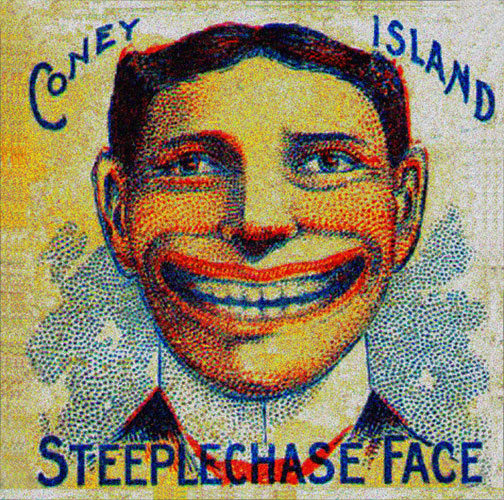8. What Was Behind Coney Island’s (Somewhat Creepy) Logo?

“The only thing about America that interests me is Coney Island,” the famous psychoanalyst Sigmund Freud once said. Thus, on August 28, 1909, he paid a visit to Dreamland. A century after his visit, The Coney Island Amateur Psychoanalytic Society and Its Circle was published based on his trip. Of course, Freud didn’t go to see Dreamland’s fun and games, but rather, to explore its reputation as a site of “hedonism and sexuality.” With all the gambling, drinking, and “getting as close as possible to the opposite sex” that Coney Island encouraged among its visitors, it quickly became a symbol of sexuality during a time when the topic was somewhat taboo. Freud felt that its outlandish attractions reflected humans’ instinctual, bodily desires, making it the ideal place to explore the id.
Steeplechase Park’s “Funny Face” logo, which was first used in 1897, encompassed the very same aura Freud was interested in. The park’s founder founded by George Tilyou was well-versed in the field of crowd psychology. Thus, he used the grinning logo shown above as a symbol of Steeplechase Park’s aura of amusement, laughter, and sex. According to the Coney Island History Project, during the park’s lifetime, the logo’s expression changed; the face was “a gleeful, maniacal visage” at one point in time and “as inscrutable as Mona Lisa” at another. Charles Denson, the Executive Director of the Coney Island History Project, even said that the Funny Face’s original winking and leering design was intentional. “The face is like a Victorian relic. It’s the repressed id, and the id being released,” he said.





